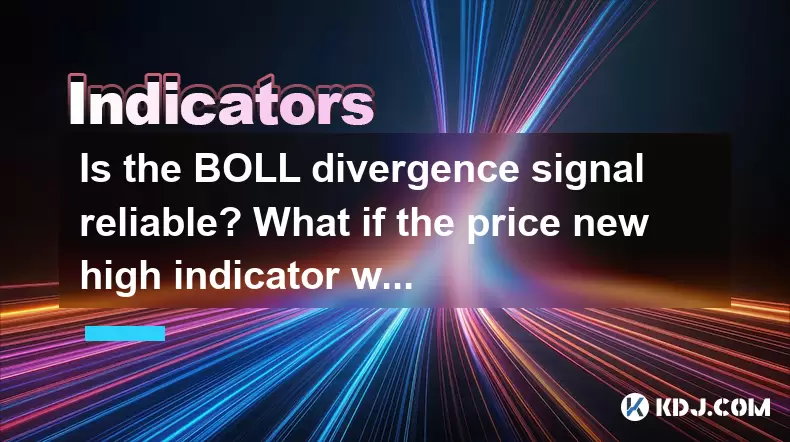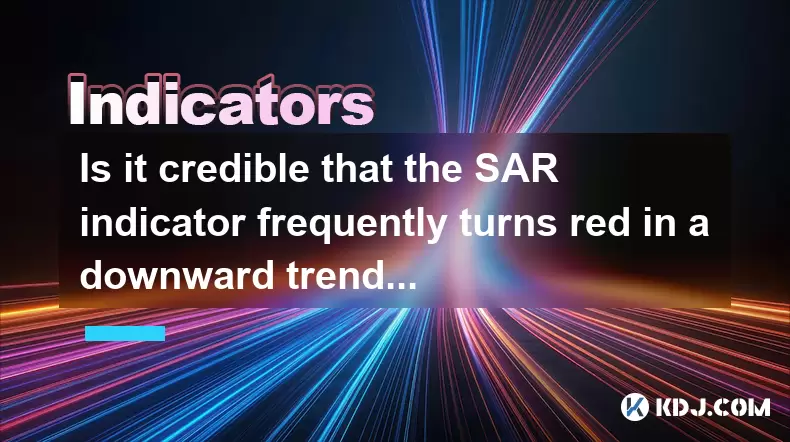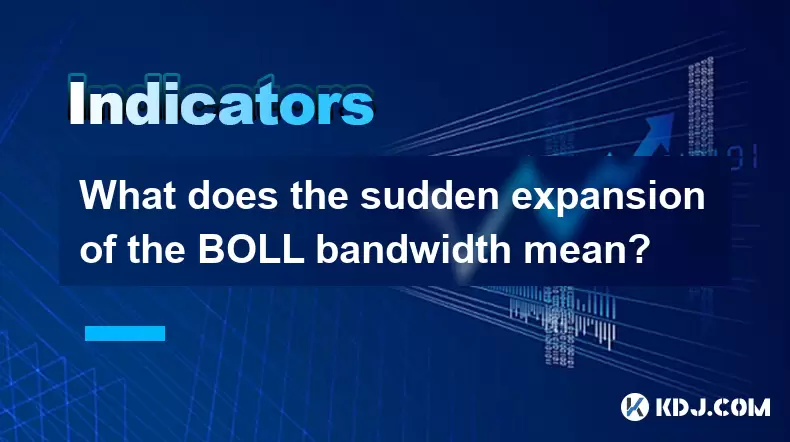-
 Bitcoin
Bitcoin $103,668.6810
-0.42% -
 Ethereum
Ethereum $2,427.2834
-2.40% -
 Tether USDt
Tether USDt $1.0003
0.02% -
 XRP
XRP $2.1193
-0.30% -
 BNB
BNB $636.2387
-1.32% -
 Solana
Solana $140.9214
-1.16% -
 USDC
USDC $0.9999
0.00% -
 TRON
TRON $0.2731
-0.04% -
 Dogecoin
Dogecoin $0.1609
-1.82% -
 Cardano
Cardano $0.5779
-0.26% -
 Hyperliquid
Hyperliquid $33.2383
-4.10% -
 Bitcoin Cash
Bitcoin Cash $473.9152
-2.33% -
 Sui
Sui $2.6499
-3.20% -
 Chainlink
Chainlink $12.5513
-1.73% -
 UNUS SED LEO
UNUS SED LEO $8.9251
0.39% -
 Stellar
Stellar $0.2424
-1.05% -
 Avalanche
Avalanche $17.1776
-2.32% -
 Toncoin
Toncoin $2.9186
-2.19% -
 Shiba Inu
Shiba Inu $0.0...01119
-2.30% -
 Litecoin
Litecoin $83.1100
-0.05% -
 Hedera
Hedera $0.1435
-1.31% -
 Monero
Monero $312.1229
0.28% -
 Ethena USDe
Ethena USDe $1.0006
0.00% -
 Polkadot
Polkadot $3.4148
-0.76% -
 Dai
Dai $1.0000
0.00% -
 Bitget Token
Bitget Token $4.2877
-0.24% -
 Uniswap
Uniswap $6.8295
-8.76% -
 Pepe
Pepe $0.0...09732
-1.53% -
 Pi
Pi $0.5345
-0.82% -
 Aave
Aave $245.5038
-3.02%
Is the BOLL divergence signal reliable? What if the price new high indicator weakens?
A weakening price new high indicator can confirm a bearish BOLL divergence, signaling potential downward moves in cryptocurrency markets like Bitcoin and Ethereum.
May 28, 2025 at 12:43 pm

Understanding BOLL Divergence Signals
The Bollinger Bands (BOLL) divergence signal is a popular technical analysis tool used by many traders within the cryptocurrency market. This signal is based on the relationship between the price of an asset and its Bollinger Bands. The Bollinger Bands consist of a middle band, which is usually a simple moving average, and two outer bands that are standard deviations away from the middle band. A divergence occurs when the price of an asset moves in the opposite direction of an indicator, such as the Relative Strength Index (RSI).
The reliability of the BOLL divergence signal depends on several factors, including the timeframe being analyzed, the volatility of the asset, and the trader's experience. In general, a bullish divergence occurs when the price makes a lower low, but the RSI makes a higher low. Conversely, a bearish divergence happens when the price makes a higher high, but the RSI makes a lower high. These signals suggest potential reversals in the price trend.
Factors Affecting the Reliability of BOLL Divergence Signals
Market Volatility plays a significant role in the reliability of BOLL divergence signals. In highly volatile markets, such as those seen in many cryptocurrencies, the bands can widen significantly, leading to more frequent signals. However, not all of these signals will be accurate, as the increased volatility can lead to false breakouts and reversals.
Timeframe is another crucial factor. Shorter timeframes, such as 15-minute or hourly charts, may produce more signals, but these are often less reliable than those seen on daily or weekly charts. Traders need to consider their trading strategy and goals when deciding which timeframe to use for analyzing BOLL divergence signals.
Trader Experience also affects the reliability of these signals. Experienced traders can better interpret the signals and understand the context in which they occur. They are more likely to combine BOLL divergence signals with other technical indicators and fundamental analysis to increase their accuracy.
The Impact of a Weakening Price New High Indicator
When the price new high indicator weakens, it can have significant implications for traders relying on BOLL divergence signals. The price new high indicator typically measures the momentum of an asset by tracking the number of new highs it reaches within a given period. A weakening of this indicator suggests that the bullish momentum is fading, which could lead to a potential reversal or consolidation.
In the context of BOLL divergence signals, a weakening price new high indicator can confirm a bearish divergence. If the price is making higher highs, but the price new high indicator is weakening, and the RSI is showing a lower high, this combination of signals strengthens the case for a potential downward move. Traders might see this as an opportunity to enter short positions or exit long positions.
Practical Application of BOLL Divergence Signals
To apply BOLL divergence signals effectively, traders need to follow a systematic approach. Here are the steps to identify and act on these signals:
- Identify the Bollinger Bands: Plot the Bollinger Bands on your chosen timeframe. The default settings are typically a 20-period simple moving average with two standard deviations for the outer bands.
- Monitor the Price and RSI: Look for divergences between the price and the RSI. A bullish divergence occurs when the price makes a lower low, but the RSI makes a higher low. A bearish divergence occurs when the price makes a higher high, but the RSI makes a lower high.
- Check the Price New High Indicator: Observe the price new high indicator to see if it aligns with the divergence signal. A weakening indicator can confirm a bearish divergence.
- Confirm with Other Indicators: Use additional technical indicators, such as the Moving Average Convergence Divergence (MACD) or the Stochastic Oscillator, to confirm the divergence signal.
- Set Entry and Exit Points: Based on the confirmed signal, set your entry and exit points. Consider using stop-loss orders to manage risk.
Case Studies of BOLL Divergence Signals in Cryptocurrency Markets
Bitcoin (BTC) Case Study: In early 2021, Bitcoin experienced a significant bullish run, reaching new all-time highs. However, in April 2021, a bearish BOLL divergence signal appeared on the daily chart. The price made a higher high, but the RSI made a lower high, and the price new high indicator began to weaken. This divergence signal, combined with other technical indicators, suggested a potential reversal. Indeed, Bitcoin's price corrected sharply in the following weeks, validating the signal.
Ethereum (ETH) Case Study: In mid-2021, Ethereum also showed a bearish BOLL divergence signal on its daily chart. The price reached new highs, but the RSI failed to confirm these highs, and the price new high indicator weakened. This signal, coupled with other bearish indicators, indicated a potential pullback. Ethereum's price subsequently declined, confirming the divergence signal.
Combining BOLL Divergence Signals with Other Strategies
To enhance the reliability of BOLL divergence signals, traders often combine them with other trading strategies. One such strategy is trend following, where traders use BOLL divergence signals to identify potential reversals within an established trend. For example, if a bullish trend is in place, a bearish BOLL divergence signal might suggest a temporary pullback rather than a complete reversal.
Another strategy is to use BOLL divergence signals in conjunction with support and resistance levels. If a bearish divergence signal occurs near a strong resistance level, it can provide additional confirmation of a potential downward move. Conversely, a bullish divergence signal near a strong support level can increase the likelihood of a price bounce.
Risk management is also crucial when using BOLL divergence signals. Traders should always set stop-loss orders to limit potential losses if the market moves against their position. Additionally, position sizing and diversification can help manage risk and protect capital.
Frequently Asked Questions
Q: Can BOLL divergence signals be used on all cryptocurrencies?
A: Yes, BOLL divergence signals can be applied to any cryptocurrency, but their effectiveness may vary depending on the volatility and trading volume of the specific asset. More liquid and widely traded cryptocurrencies, such as Bitcoin and Ethereum, tend to provide more reliable signals.
Q: How often should I check for BOLL divergence signals?
A: The frequency of checking for BOLL divergence signals depends on your trading strategy and timeframe. For short-term traders using hourly or 15-minute charts, checking multiple times a day may be necessary. For longer-term traders using daily or weekly charts, checking once a day or once a week may be sufficient.
Q: Are there any specific settings for the Bollinger Bands that work best for divergence signals?
A: The default settings for Bollinger Bands, which are a 20-period simple moving average with two standard deviations, are commonly used for divergence signals. However, some traders may adjust these settings based on their specific trading strategy and the volatility of the asset they are trading.
Q: Can BOLL divergence signals be used in conjunction with automated trading systems?
A: Yes, BOLL divergence signals can be incorporated into automated trading systems. Many trading platforms and software allow users to set up custom indicators and algorithms based on BOLL divergence signals. However, it is essential to thoroughly backtest and monitor these systems to ensure their effectiveness.
Disclaimer:info@kdj.com
The information provided is not trading advice. kdj.com does not assume any responsibility for any investments made based on the information provided in this article. Cryptocurrencies are highly volatile and it is highly recommended that you invest with caution after thorough research!
If you believe that the content used on this website infringes your copyright, please contact us immediately (info@kdj.com) and we will delete it promptly.
- Bitcoin's Chain Split Drama: Knots, Core, and the BTC Price Rollercoaster
- 2025-06-21 22:25:12
- XRP Ledger Meme Coins: Volume Surges and Emerging Trends
- 2025-06-21 22:45:12
- Coin Price Surges: Smart Money's New Crypto Obsessions
- 2025-06-21 22:45:12
- Cardano, Neo Pepe, and Crypto Presales: What's Hot in the NYC Crypto Scene?
- 2025-06-21 22:25:12
- XRP, Meme Coins, and Wealthy Investors: A New Crypto Order?
- 2025-06-21 23:25:12
- Cardano (ADA) Price Check: Bearish Blues or Bounce Back Incoming?
- 2025-06-21 23:10:13
Related knowledge

Does the sudden contraction of ATR indicate the end of the trend?
Jun 20,2025 at 11:14pm
Understanding ATR and Its Role in Technical AnalysisThe Average True Range (ATR) is a technical indicator used to measure market volatility. Developed by J. Welles Wilder, ATR calculates the average range of price movement over a specified period, typically 14 periods. It does not indicate direction—only volatility. Traders use ATR to gauge how much an ...

Is it invalid if the DMI crosses but the ADX does not expand?
Jun 21,2025 at 09:35am
Understanding the DMI and ADX RelationshipIn technical analysis, the Directional Movement Index (DMI) consists of two lines: +DI (Positive Directional Indicator) and -DI (Negative Directional Indicator). These indicators are used to determine the direction of a trend. When +DI crosses above -DI, it is often interpreted as a bullish signal, while the opp...

How to filter false signals when the SAR indicator frequently flips?
Jun 21,2025 at 08:43pm
Understanding the SAR Indicator and Its BehaviorThe SAR (Stop and Reverse) indicator is a popular technical analysis tool used in cryptocurrency trading to identify potential reversals in price movement. It appears as a series of dots placed either above or below the price chart, signaling bullish or bearish trends. When the dots are below the price, it...

Is the trend continuation when the Williams indicator is oversold but there is no rebound?
Jun 20,2025 at 11:42pm
Understanding the Williams %R IndicatorThe Williams %R indicator, also known as the Williams Percent Range, is a momentum oscillator used in technical analysis to identify overbought and oversold levels in price movements. It typically ranges from 0 to -100, where values above -20 are considered overbought and values below -80 are considered oversold. T...

Is it credible that the SAR indicator frequently turns red in a downward trend?
Jun 22,2025 at 12:07am
What Is a Bitcoin Wallet and Why Do You Need One?A Bitcoin wallet is a digital tool that allows users to store, send, and receive Bitcoin. Unlike traditional wallets that hold physical currency, Bitcoin wallets do not actually store the cryptocurrency itself. Instead, they manage the private keys that grant access to your Bitcoin on the blockchain. Thes...

What does the sudden expansion of the BOLL bandwidth mean?
Jun 21,2025 at 01:49pm
Understanding the BOLL IndicatorThe BOLL (Bollinger Bands) indicator is a widely used technical analysis tool in cryptocurrency trading. It consists of three lines: a simple moving average (SMA) in the center, with upper and lower bands calculated based on standard deviations from that SMA. These bands dynamically adjust to price volatility. When trader...

Does the sudden contraction of ATR indicate the end of the trend?
Jun 20,2025 at 11:14pm
Understanding ATR and Its Role in Technical AnalysisThe Average True Range (ATR) is a technical indicator used to measure market volatility. Developed by J. Welles Wilder, ATR calculates the average range of price movement over a specified period, typically 14 periods. It does not indicate direction—only volatility. Traders use ATR to gauge how much an ...

Is it invalid if the DMI crosses but the ADX does not expand?
Jun 21,2025 at 09:35am
Understanding the DMI and ADX RelationshipIn technical analysis, the Directional Movement Index (DMI) consists of two lines: +DI (Positive Directional Indicator) and -DI (Negative Directional Indicator). These indicators are used to determine the direction of a trend. When +DI crosses above -DI, it is often interpreted as a bullish signal, while the opp...

How to filter false signals when the SAR indicator frequently flips?
Jun 21,2025 at 08:43pm
Understanding the SAR Indicator and Its BehaviorThe SAR (Stop and Reverse) indicator is a popular technical analysis tool used in cryptocurrency trading to identify potential reversals in price movement. It appears as a series of dots placed either above or below the price chart, signaling bullish or bearish trends. When the dots are below the price, it...

Is the trend continuation when the Williams indicator is oversold but there is no rebound?
Jun 20,2025 at 11:42pm
Understanding the Williams %R IndicatorThe Williams %R indicator, also known as the Williams Percent Range, is a momentum oscillator used in technical analysis to identify overbought and oversold levels in price movements. It typically ranges from 0 to -100, where values above -20 are considered overbought and values below -80 are considered oversold. T...

Is it credible that the SAR indicator frequently turns red in a downward trend?
Jun 22,2025 at 12:07am
What Is a Bitcoin Wallet and Why Do You Need One?A Bitcoin wallet is a digital tool that allows users to store, send, and receive Bitcoin. Unlike traditional wallets that hold physical currency, Bitcoin wallets do not actually store the cryptocurrency itself. Instead, they manage the private keys that grant access to your Bitcoin on the blockchain. Thes...

What does the sudden expansion of the BOLL bandwidth mean?
Jun 21,2025 at 01:49pm
Understanding the BOLL IndicatorThe BOLL (Bollinger Bands) indicator is a widely used technical analysis tool in cryptocurrency trading. It consists of three lines: a simple moving average (SMA) in the center, with upper and lower bands calculated based on standard deviations from that SMA. These bands dynamically adjust to price volatility. When trader...
See all articles

























































































